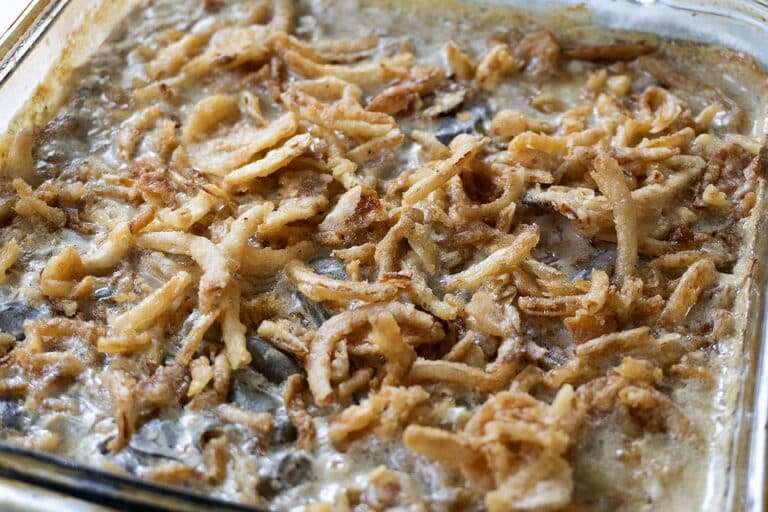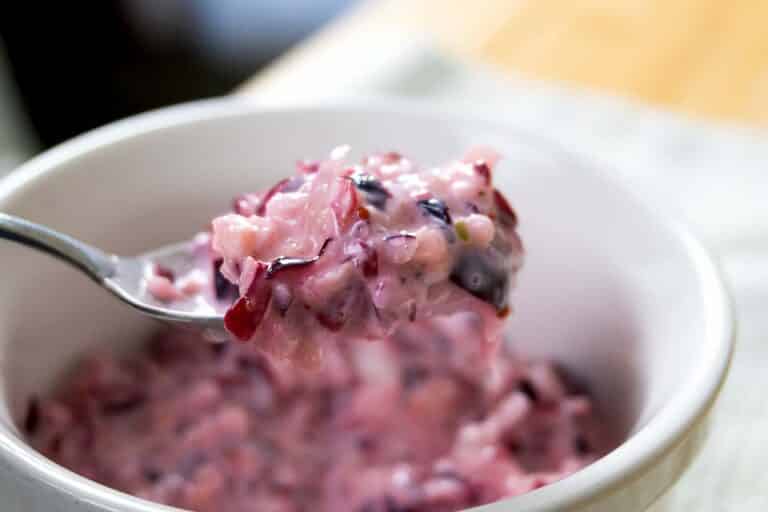How To Clean Collard Greens
Thoroughly clean collards are the foundation of this delicious dish. In this article, we’ll show you how to wash collard greens- it’s easy!
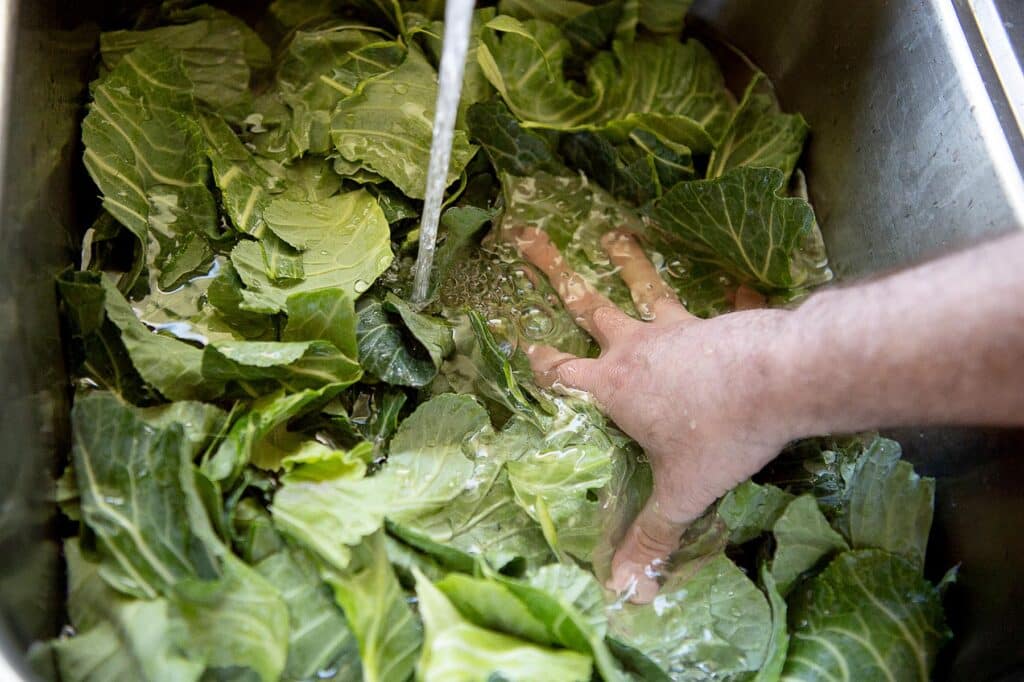
Cleaning collard greens may seem like a daunting task, but with a few simple steps, you can have fresh, vibrant greens ready to cook in no time.
Knowing how to properly clean collard greens is essential for preparing delicious meals. We’ll walk you through how to clean collard greens, selecting the best greens, and storing them for future use.
Once you learn how to properly clean collards, check out our Collard Greens with Smoked Turkey recipe.
Why You’ll Love This
Learning how to clean collard greens opens up a world of culinary possibilities. Not only does it ensure that your greens are free from dirt and debris, but it also helps to preserve their natural flavor and texture. With just a few minutes of prep work, you can transform ordinary collard greens into a mouthwatering dish that will impress even the pickiest of eaters.
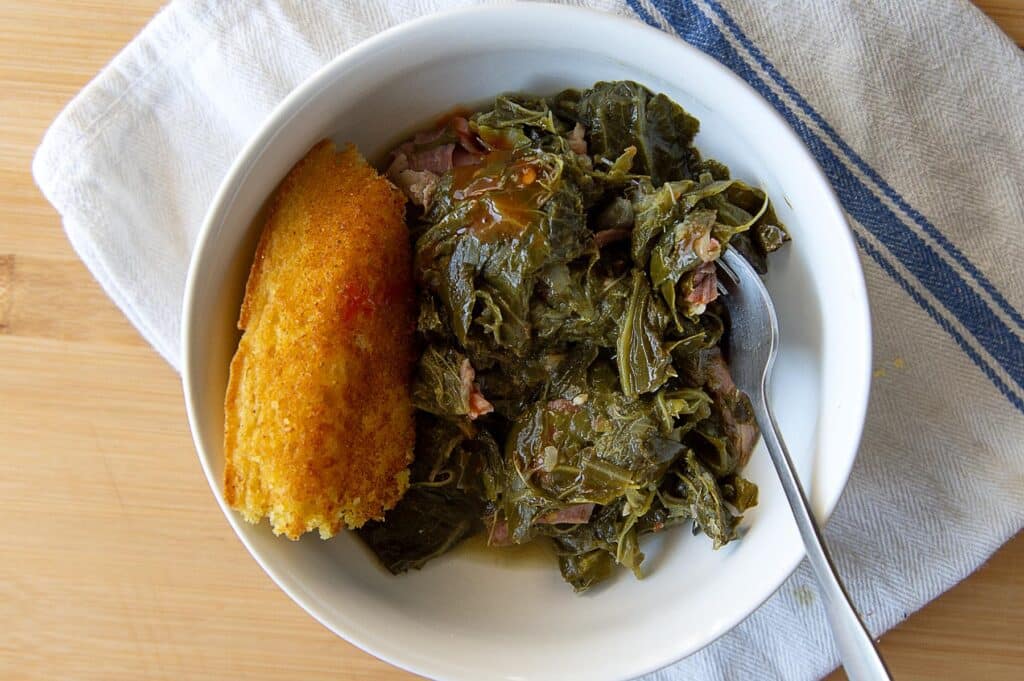
What Kitchen Tools Are Needed For This Recipe
To clean collard greens, you’ll need the following kitchen tools:
- Large bowl or sink
- Colander
- Knife
- Cutting board
- Water source
- White vinegar
What Ingredients Are Need
The only ingredient you’ll need to clean collard greens is water. However, some people like to add a splash of white vinegar to their cleaning solution to help remove any stubborn dirt or residue.
How To Make It
1. Inspect the Greens: Before cleaning, take a close look at your collard greens and discard any leaves that are wilted, yellowed, or damaged. This will ensure that you’re working with the freshest greens possible.
2. Remove the stems: Chop off the large end stem and discard. Cut or tear the leaves away from the thick middle stems, leaving the small stems. This is personal preference. We don’t like thick stems in our collards, but you can leave them if you prefer.
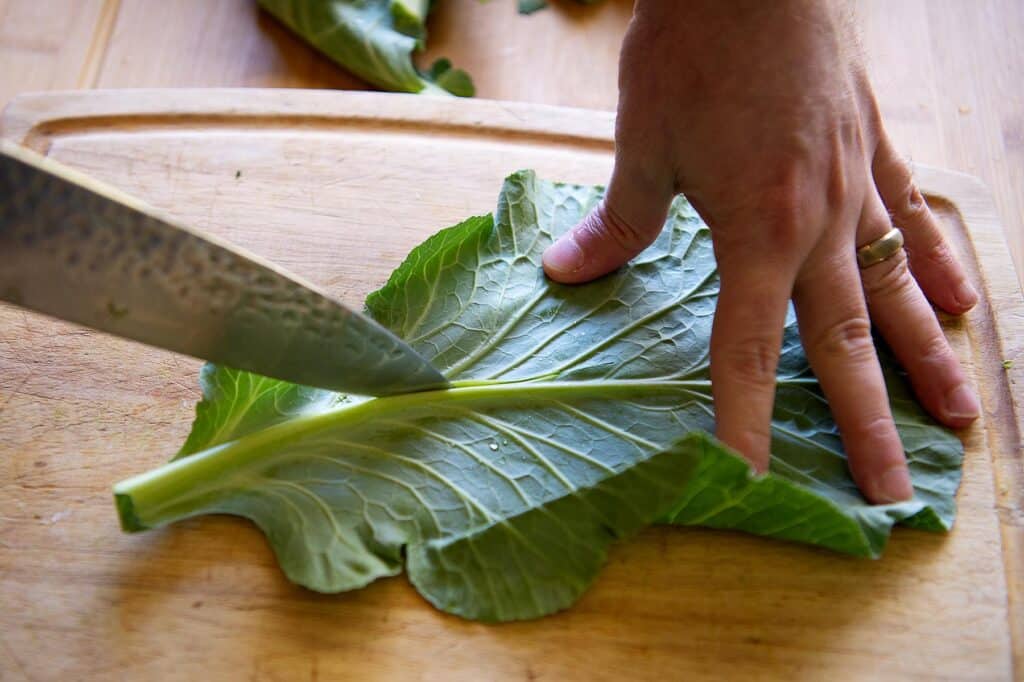
3. Fill a Bowl or Sink with Water: Place your collard greens in a large bowl or sink filled with cool water and add ½ cup of white vinegar. (If using your sink, be sure to clean thoroughly first). The acidity of the vinegar helps to break down dirt and residue, leaving your greens squeaky clean. Swish them around gently to help loosen any dirt or debris. Let sit for 10 minutes.
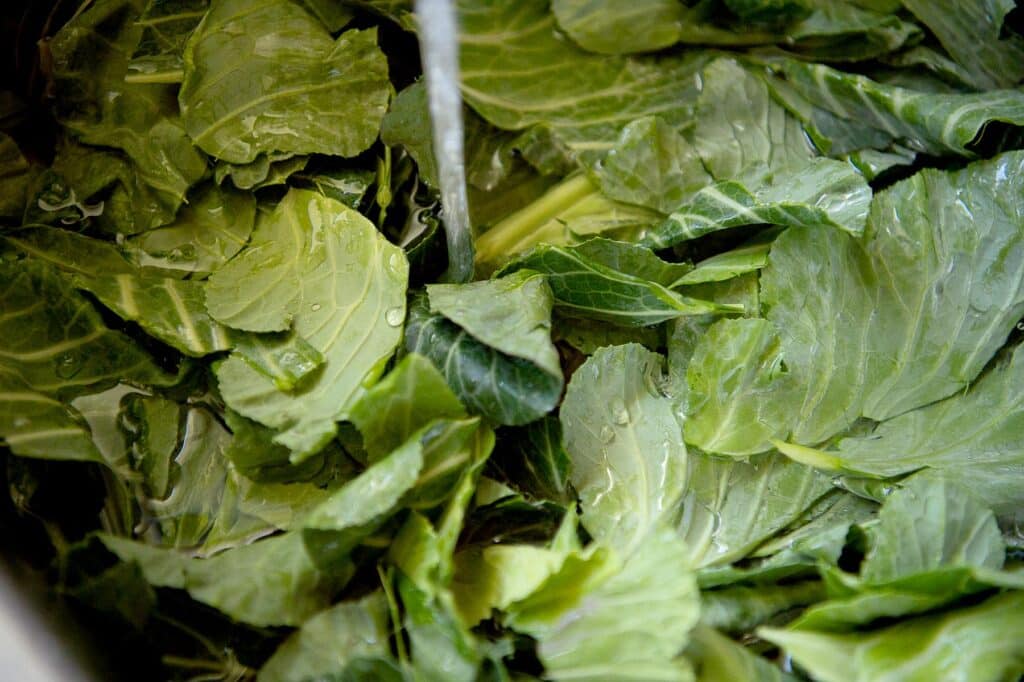
4. Rinse Thoroughly: Remove the collard greens from the water and rinse them under cold, running water. Pay special attention to the stems and crevices where dirt may be hiding.
5. Repeat as Necessary: Depending on how dirty your collard greens are, you may need to repeat the soaking and rinsing process several times until the water runs clear.
6. Pat Dry: Once your collard greens are clean, gently pat them dry with a clean kitchen towel or paper towels. Avoid wringing them out, as this can damage the delicate leaves.
7. Store or Use Immediately: Your collard greens are now clean and ready to use in your favorite recipes. If you’re not planning to use them right away, store them in the refrigerator in a plastic bag or container lined with paper towels to absorb any excess moisture.
Helpful Tips
- When selecting collard greens at the grocery store, look for leaves that are dark green and crisp, with no signs of wilting or yellowing.
- If you’re short on time, you can purchase pre-washed and pre-cut collard greens at most grocery stores, although they may not be as fresh as whole bunches.
- Don’t forget to wash your hands thoroughly before and after handling collard greens to prevent cross-contamination.
- If using your kitchen sink, don’t forget to thoroughly scrub down your sink with soap and water first.
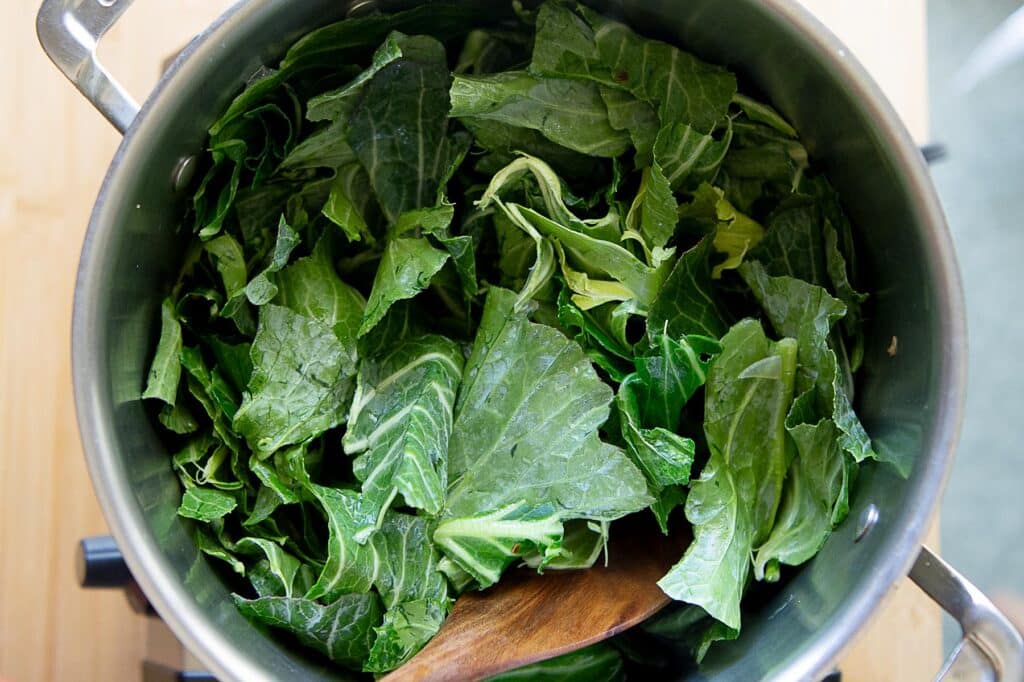
History Behind This Recipe
Collard greens have been a staple in Southern cuisine for centuries, with roots tracing back to Africa. Enslaved Africans brought their knowledge of growing and cooking greens with them to the American South, where collards quickly became a dietary staple. Today, collard greens are enjoyed by people all over the world for their flavor, versatility, and nutritional benefits.
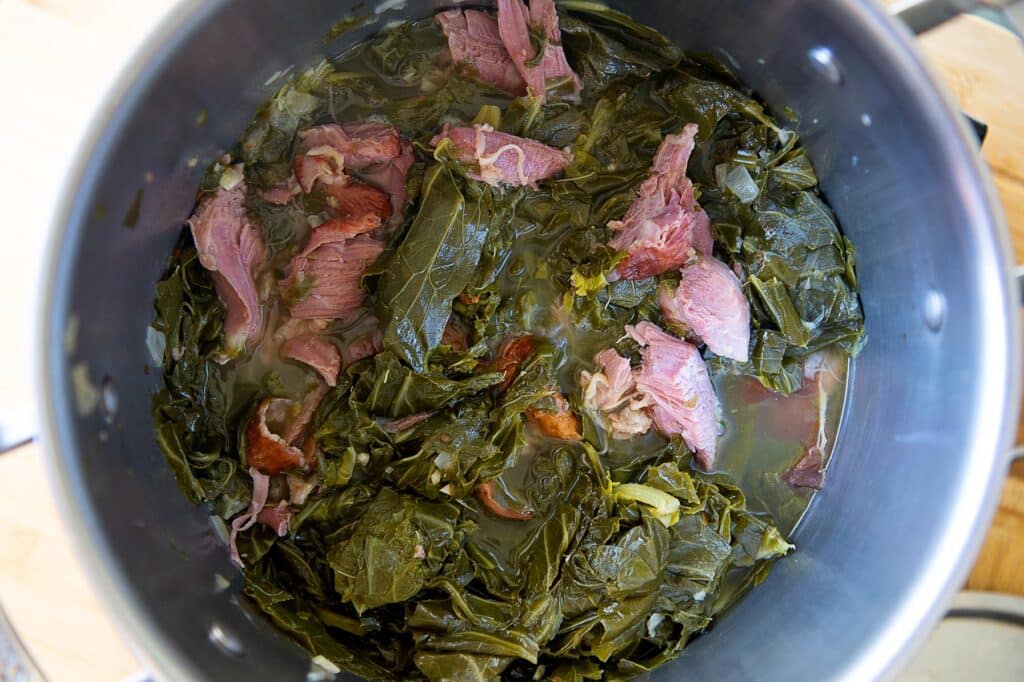
Substitutions And Variations
- If you don’t have white vinegar on hand, you can substitute with apple cider vinegar or lemon juice for a similar cleaning effect.
- For a deeper clean, you can add a few drops of dish soap to your soaking water. Just be sure to rinse your collard greens thoroughly afterward to remove any soap residue.
Storage Instructions
Once cleaned, collard greens can be stored in the refrigerator for up to one week. To maximize freshness, wrap them in damp paper towels and place them in a plastic bag or container.
Avoid washing them until you’re ready to use them, as excess moisture can cause them to spoil more quickly.
Alternatively, you can blanch and freeze collard greens for long-term storage. Simply blanch them in boiling water for 1-2 minutes, then plunge them into ice water to stop the cooking process. Drain well, pat dry, and pack them into freezer-safe bags or containers. Frozen collard greens will keep for up to six months.




